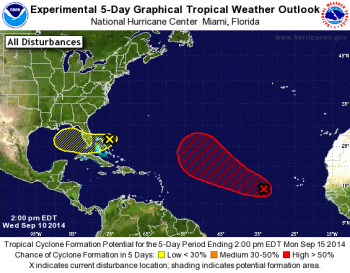Dec182014
Posted at 1:34 PM
The 2014 hurricane season is over and, once again, no major hurricanes (Category 3 of higher on the Saffir-Simpson Hurricane Wind Scale) struck the United States. That's a record nine years in row! Of course, it's foolish to believe this remarkable streak will last, and we have to be ready for it to end next season.
The stakes couldn't be higher. In its latest figures, the Commerce Department's U.S. Census Bureau finds 185 coastal counties along the Atlantic and Gulf of Mexico, home to 58 million people, at risk to a hurricane. It all comes down to preparation, education and accurate forecasting. It's easy to see why one of NOAA's primary goals is to provide the information and services to help communities become more resilient.
With that in mind, this year the Commerce Department's National Oceanic and Atmospheric Administration's National Hurricane Center introduced an experimental five-day Graphical Tropical Weather Outlook to complement its text-only product for both the Atlantic and eastern North Pacific basins. This new outlook provided easy to understand graphics depicting the likelihood of development and the potential formation areas of new tropical cyclones over a five day period. The hurricane center also introduced an experimental Potential Storm Surge Flooding Map for those areas along the Gulf and Atlantic coasts of the United States at risk of storm surge from an approaching tropical cyclone. First used on July 1 as a strengthening Tropical Storm Arthur targeted the North Carolina coastline, the map highlighted those geographical areas where inundation from storm surge could occur and the height above ground that the water could reach. This information was vital for emergency management authorities and the public in the affected areas.
Additionally, upgrades to NOAA’s newest hurricane model, the Hurricane Weather Research and Forecasting (HWRF), produced excellent forecasts for Hurricane Arthur’s landfall in the Outer Banks of North Carolina, and provided outstanding track forecasts in the Atlantic basin through the season. The model, developed by NOAA researchers, is also providing guidance on tropical cyclones around the world and is used by several international operational forecast agencies. All of these improvements are an integral part of the ongoing evolution currently underway at NOAA's National Weather Service.




